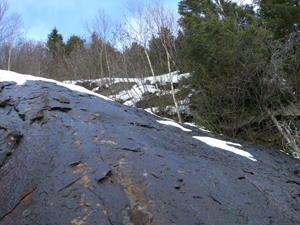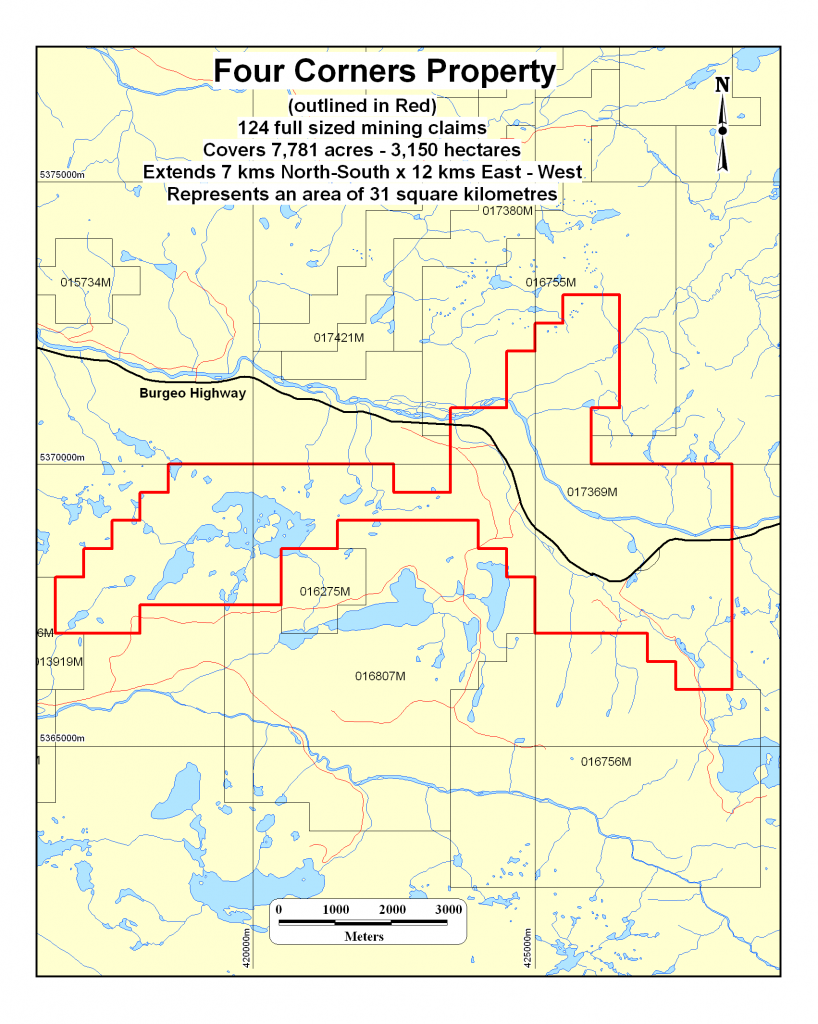Projects Overview
Four Corners Mineral Resource
Since 2007, geological and geophysical surface investigations have systematically produced highly positive, 43-101 compliant results suggesting this newly outlined resource is emerging as the most significant discovery of metals in North America since the rich Voisey’s Bay Nickel – Copper – Cobalt discovery in September 1993.

Extensive outcropping of massive magnetite mineralization on Keating Hill, noted by independent Prospector Shawn Rose during the February 2010 gridding, sampling and geophysical surveying program.
The latest round of surface investigations completed in January 2010 have been highly successful in advancing the resource potential. Surface sampling and a ground magnetometer survey over a 3,000 metre (10,000 feet – 2 miles) grid, which partially covers the project area, shows the mineralized zone is at least 3,000 metres in length and extending in both directions off the grid is much larger than the 1,000 metre strike length established prior to this latest work.
The latest assays confirm strong vanadium values up to 2200 ppm (parts per million) which translate into economic grades of vanadium pentoxide up to 0.389% and representing the best suite of surface results to date, including the best iron oxide concentration ranging up to 56.92% Fe2O3. This increase in Fe is very significant as the Four Corners Project includes a historical Fe prospect discovered in 1931, which during earlier work programs did not yield these high Fe contents. Also significant is the first time detection of titanium oxide (TiO2) up to 14.33% from this suite of strongly enriched samples. This is the first time TiO2 analysis has been completed on samples from the project area. ISO Accredited Activation Laboratories of Ancaster, Ontario, completed the assaying.
The highly magnetic, mineralized zone, which exceeds the 3,000 metre strike length of the grid survey, reveals a high tonnage target visualized at hundreds of millions of tonnes. The magnetometer readings identify at least 20 highly ranked, drill ready sites based on the strong surface readings. Based on current commodity prices for vanadium and titanium this resource could have a value in the range of 30 – 40 billion dollars. Much of the mineralized zone outlined to date is contained in a 225 metre high hill along a paved highway, which provides excellent mining architecture and infrastructure support for an open pit mine development. The project also boasts an existing power line and is 50 kms (30 miles) east of the ice free, deep-water port at Stephenville, also regularly serviced by commercial airlines.
Work will recommence in April 2010 with further gridding and magnetometer surveying to cover the full extent of the mineralized zone and a first phase of core drilling predicted at 7,500 metres (25,000 feet) to adequately test the resource potential over an area of mineralization indicated to be up to 4,000 metres in length, and up to several hundred metres wide, at a predicted cost of $0.94 M CDN.
Click here for further infrastructure, geological and deposit summaries.
